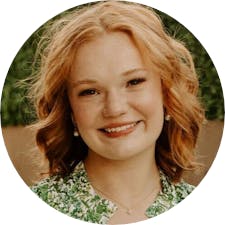With Democratic presidential nominee Kamala Harris “plateauing” and Republican presidential candidate Donald Trump facing criticism for failing to outline key elements of his platform, two across-the-aisle former senior advisers spoke on the final push each candidate will need to secure the 270 majority of electoral votes on Election Day.
Karl Rove, former senior adviser and deputy chief of staff in President George W. Bush’s administration, and David Axelrod, former senior adviser and chief strategist in President Barack Obama’s administration, spoke about the upcoming election at a Tuesday event hosted by the Duke Program in American Grand Strategy, POLIS: Center for Politics and the department of political science.
Rove and Axelrod asserted that although Harris’ last-minute ascension to the nomination and strong debate performance spurred enthusiasm for the Democratic Party, she must work exceedingly hard to continue the campaign’s momentum in her shortened election bid.
“She had sort of drifted around September, and by late September early October, she was plateauing,” Rove said. “She ran out of that momentum, and she hasn’t found a way to restart that through her own activities.”
Rove also noted the need for Trump to prove he has a “second act” in him and to “prosecute a case against [Harris] better than he is,” acknowledging that Trump’s time would be better spent laying out exactly what he plans to do as president instead of than assigning blame to the Democrats.
Both Axelrod and Rove provided analysis on the current state of the race, which shows a razor-thin margin between Trump and Harris. Axelrod noted that the largest margin between the candidates in battleground states is 2% in Arizona.
“The question when you look at early voting is: Which party is getting more of the irregular voters and the new voters?” Axelrod said, noting that although there is not enough available data this early in the voting period to evaluate this, he thinks the numbers are closer than they were four years ago.
Both agreed that changing party voting dynamics will affect how the election pans out this November.
“Former President Trump has spent a lot of time telling people that mail-in voting was not a legitimate thing, but his campaign has been working hard to get people to do it,” Axelrod said. “And so you see more Republicans participating who are voting more, both in-person and [by] mail. That's going to change the dynamics a little bit.”
However, the target voters have changed too. Rove pointed to the small number of undecided and “weakly-linked” voters as becoming “intensely more important” in the race. He added that the strongest campaign efforts are those aimed at identifying and targeting those voters.
To end the evening, both Rove and Axelrod pointed out that Americans are “fed up” with the current state of polarized politics and that they want to “see something different,” particularly after watching the noticeably more amicable tone of the vice presidential debate compared to both prior presidential debates.
“The vast majority of people … want to get something constructive done, and we need to say, ‘good for you for doing that,’” Rove said.
Axelrod concluded by emphasizing the importance of young people engaging in the democratic process.
“[Young people] are skeptical, but they're not cynical, and they understand at some level that there are tools provided to us that we can use to try and make the world a better place, to make our community stronger, and they want to know how they can do that,” he said. “And so I think we [have] to encourage them, because their day it's going to fall to them to carry this experiment forward, and we want them to be hopeful enough.”
Get The Chronicle straight to your inbox
Sign up for our weekly newsletter. Cancel at any time.

Claire Cranford is a Trinity sophomore and features managing editor for the news department.

